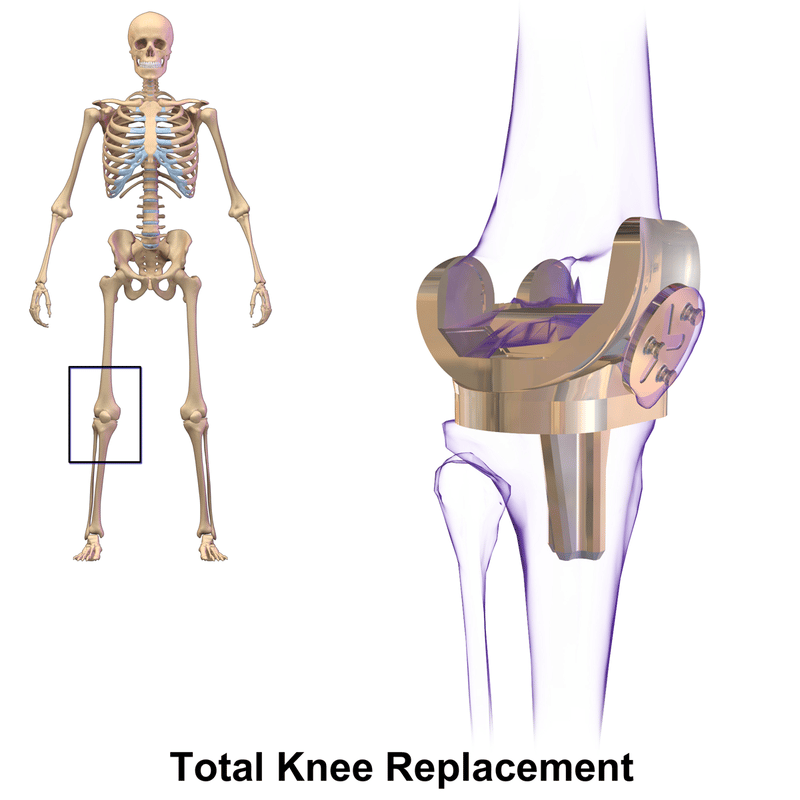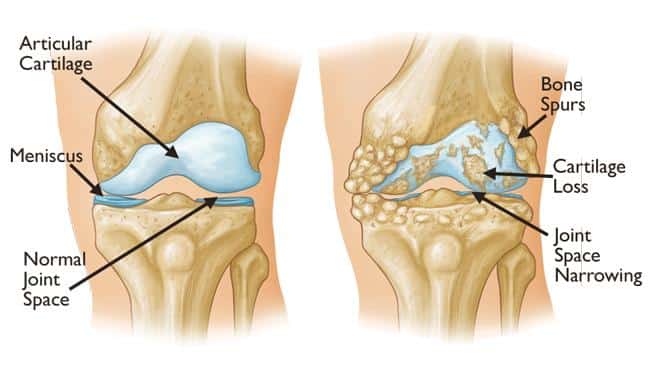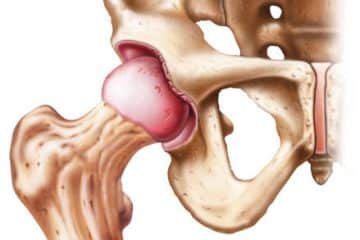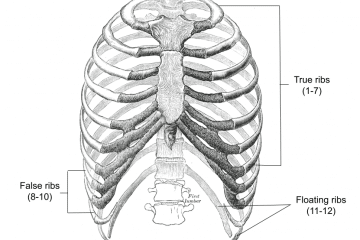Knee Replacement Surgery – Overview
Knee replacement surgery, which is also known as knee arthroplasty in medical terms, refers to a surgical procedure to replace the weight-bearing surfaces of the knee joint to relieve pain and disability.

The surgery involves the replacement of damaged joint surfaces of the knee with artificial implants to aid in the continual function of the knee.
It is one of the most common bone surgeries performed in the country and according to the Agency for Healthcare Research and Quality, more than 600,000 knee replacements are performed each year in the United States.
Related: Types of Hip Surgery
Indications for Knee Replacement Surgery

The surgery is performed due to various knee joint diseases and defects. They include:
- Osteoarthritis – This is the chief reason for performing the surgery. Osteoarthritis results from the breakdown of joint cartilage and underlying bone resulting in joint pain and stiffness.
- Rheumatoid arthritis – This is a long-term autoimmune disorder that primarily affects joints. This implies that the body’s immune system attacks its tissue. Rheumatoid arthritis affects joint linings, causing painful swelling.
- Psoriatic arthritis – This is a form of arthritis that affects some people who have the skin condition psoriasis.
- Trauma – Knee replacement surgery may be necessitated in cases of severe trauma and disability to the knee joint. Fractures of the bones surrounding the knee or tears of the knee ligaments may damage the articular cartilage over time, causing knee pain and limiting knee function.
Osteoporosis is a condition whereby the bones become increasingly weaker and therefore a higher risk of fracture. Osteoporosis is not a reason to perform knee replacement as there it is usually no symptoms until bone fractures.
Knee replacement surgery is carried out when other conservative options such as medications and physical therapy have been exhausted.
Related: Patella Surgery
Surgical Techniques
Types
Knee replacement surgery can be performed as a partial or a total knee replacement. In a partial knee replacement, only the diseased parts of the knee joint are replaced. This, therefore, requires a smaller incision and there is a faster recovery time. However, there is a risk of other parts of the knee becoming arthritic thereby necessitating further surgery.
In a total knee replacement, there is a complete replacement of the articulating surfaces of the knee joint. The end of the femur bone is removed and replaced with a metal shell. The end of the lower leg bone (tibia) is also removed and replaced with a channeled plastic piece with a metal stem.
Techniques
There are four basic steps to a knee replacement procedure.
1. Prepare the bone. The damaged cartilage surfaces at the ends of the femur and tibia are removed along with a small amount of underlying bone.
2. Position the metal implants. The removed cartilage and bone are replaced with metal components that recreate the surface of the joint. These metal parts may be cemented or “press-fit” into the bone.
3. Resurface the patella. The undersurface of the patella (kneecap) is cut and resurfaced with a plastic button. Some surgeons do not resurface the patella, depending upon the case.
4. Insert a spacer. A medical-grade plastic spacer is inserted between the metal components to create a smooth gliding surface.
Risks of Knee Replacement Surgery
Like all surgical operations, there are risks and complications involved in knee replacement. They include:
1. Infection – This occurs in less than 1% of patients and it is the most serious complication. The prosthetic joint may be invaded by bacteria and other disease-causing agents.
Signs of an infection are fever, chills, painful joints, and a draining sinus. Further diagnostics tests may be done to confirm the diagnosis. Contact your doctor immediately if develop any of the signs.
2. Deep vein thrombosis – This refers to the formation of a blood clot in a deep vein following the surgery and it occurs in 15% of patients. Symptoms may include pain, swelling, and redness of the affected area.
3. Fractures – Periprosthetic fractures are becoming more frequent with the aging patient population and can occur intraoperatively or postoperatively. Depending on the location of the fracture and the stability of the prosthesis, these can be treated surgically with open reduction and internal fixation or revision of the prosthesis.
4. Instability – In some patients, the kneecap is unpreventable post-surgery and dislocates to the outer side of the knee. This is painful and usually needs to be treated by surgery to realign the kneecap. However, this is quite rare.
In the past, there was a considerable risk of the implant components loosening over time as a result of wear. As medical technology has improved, however, this risk has fallen considerably.
Knee Replacement Surgery Cost
The total cost for knee replacement surgery depends on a lot of factors such as the anesthetic fee, private hospital fee, private operating facility fee, partial or total knee replacement.
The average hospital charge for a total knee replacement (TKR) in the United States is $49,500. A partial knee replacement (PKR) typically costs about 10 to 20 percent less than a TKR.
Video
Recovery
The operation typically involves substantial postoperative pain and includes vigorous physical rehabilitation. The recovery period may be 6 weeks or longer and may involve the use of mobility aids (e.g. walking frames, canes, crutches) to enable the patient’s return to preoperative mobility.
Also Read: Rib Removal Surgery


